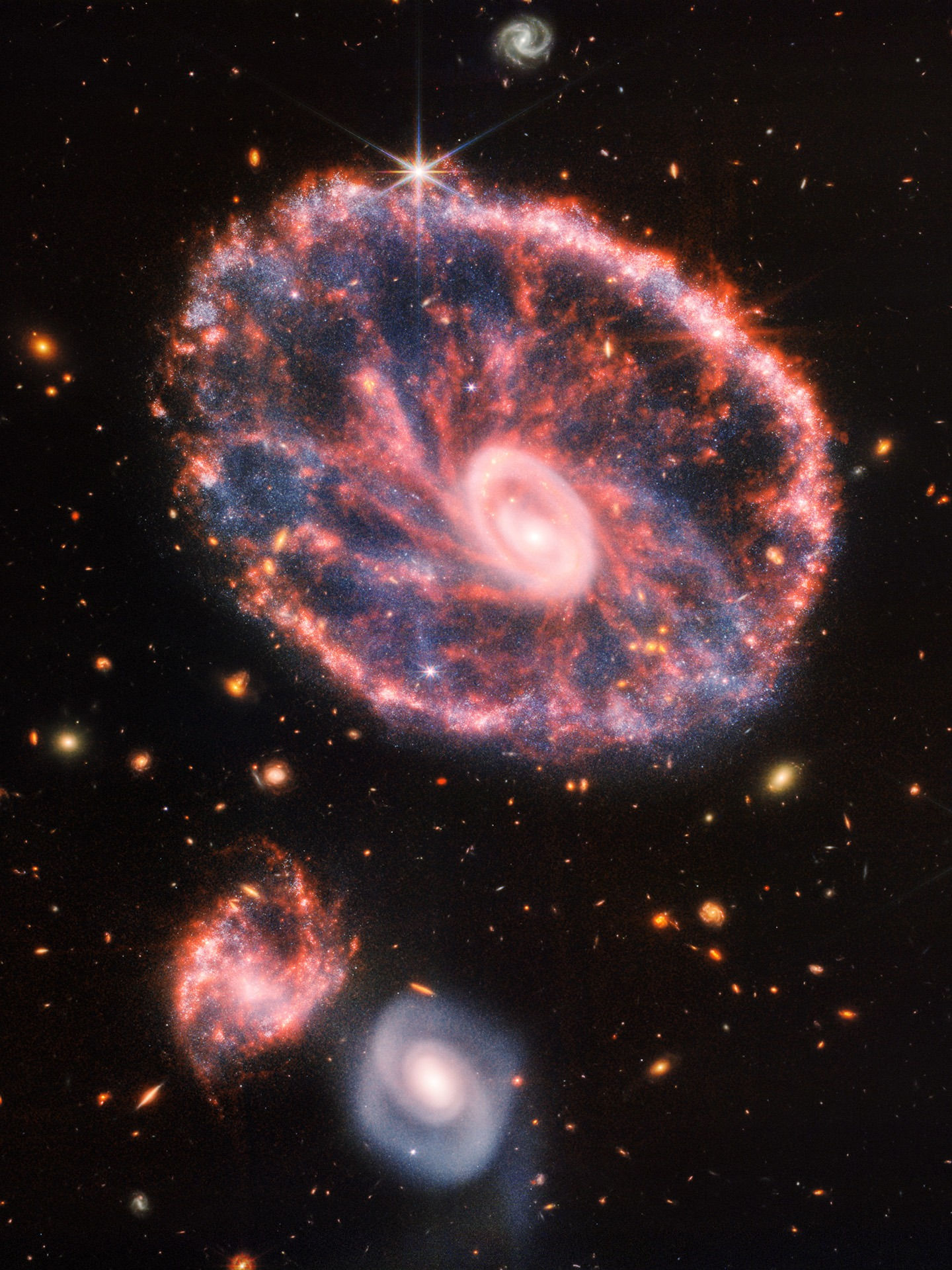Why Travelling Through a Wormhole is Impossible? Which is the Future of Space Travel?
- Phystroid
- Mar 25, 2023
- 4 min read

Researchers at the University of California, Los Angeles, have proposed a new propulsion system that could potentially transport a heavy spacecraft out of our Solar System in under 5 years, a feat that took the Voyager 1 probe 35 years to accomplish. The propulsion system is based on a pellet-beam concept, where a spacecraft orbiting Earth would shoot microscopic particles at an interstellar spacecraft.
These particles would be heated up by lasers, causing them to melt into plasma that accelerates the pellets further, propelling the spacecraft to great speeds. According to the lead researcher behind the proposal, Artur Davoyan, a pellet-beamed spacecraft weighing 1 ton could cross into interstellar space in under 5 years. While this is still theoretical, the team has received a grant from NASA to demonstrate the feasibility of the proposed propulsion concept through modelling and experiments.
There are several other futuristic, advanced propulsion systems that are currently being researched and developed. One of them is the ion thruster, which uses electric fields to ionize and accelerate propellant to produce thrust. This technology has been used by NASA's Deep Space 1 and Dawn missions, and it is being considered for use in future interplanetary missions.
Another technology that has gained attention is the nuclear thermal rocket, which heats a propellant with a nuclear reactor to produce thrust. This technology could potentially enable faster and more efficient space travel, but it has been limited by safety concerns and regulatory hurdles.
Another concept is the space elevator, which involves a cable that extends from the Earth's surface to geostationary orbit, allowing objects to be lifted into space without the need for rockets. This technology is still in the conceptual stage, but it has the potential to revolutionize space travel.

Finally, there is the idea of interstellar travel through the use of warp drives or wormholes, which would allow spacecraft to travel faster than the speed of light. While these concepts are purely theoretical and face many scientific and technological challenges, they have captured the imagination of many scientists and sci-fi enthusiasts.
Nuclear energy is definitely a promising option for advanced propulsion systems, especially for spacecraft that need to travel long distances in space. In fact, there are already several proposed concepts that are based on nuclear power, such as nuclear thermal propulsion and nuclear electric propulsion.
Nuclear thermal propulsion works by heating a propellant, such as liquid hydrogen, using a nuclear reactor, which then expels the hot gas through a nozzle to create thrust. This concept has been studied by NASA and other space agencies since the 1960s, and it could potentially offer much higher specific impulse (i.e. fuel efficiency) than chemical rockets.
Nuclear electric propulsion, on the other hand, works by using a nuclear reactor to generate electricity, which is then used to power ion thrusters or other electric propulsion systems. This approach offers even higher specific impulse than nuclear thermal propulsion, but it requires much more advanced technology and infrastructure. Other futuristic propulsion systems that are being researched include antimatter propulsion and fusion propulsion, which we address below.
Antimatter is a form of matter that has the opposite charge of regular matter, and when it comes into contact with matter, both are annihilated, releasing a large amount of energy. If we could harness this energy and use it to propel a spacecraft, we could potentially achieve extremely high speeds that would allow us to travel between galaxies in a reasonable amount of time.
Fusion propulsion has also the potential to be much more effective than fission propulsion. Fission propulsion works by splitting atoms, which releases energy in the form of heat that is used to generate thrust. Fusion propulsion, on the other hand, works by fusing atoms together, which also releases energy in the form of heat that can be used to generate thrust. The advantage of fusion over fission is that fusion releases more energy per unit mass of fuel than fission, which means that less fuel is needed to achieve the same amount of thrust.
Fusion propulsion is still in the experimental stage and faces many technical challenges that need to be overcome before it can be used for space travel. However, if these challenges can be addressed, fusion could potentially provide a much more efficient and powerful form of propulsion for interplanetary and interstellar travel.
The energy released by a reaction between matter and antimatter is given by the famous equation E = mc², where E is the energy released, m is the mass of the matter and/or antimatter particles, and c is the speed of light. When matter and antimatter collide, they annihilate each other and their masses are converted completely into energy. For example, if 1 kilogram of matter and 1 kilogram of antimatter were to collide, the total mass would be converted into energy according to the equation E = mc². The result is an enormous amount of energy release, which is equivalent to about 43 megatons of TNT.
In the context of propulsion, the energy released by matter-antimatter annihilation can be used to heat a propellant and accelerate it out of the back of a spacecraft, providing thrust. Because of the huge amount of energy that can be released in a matter-antimatter reaction, the specific impulse (a measure of the efficiency of a propulsion system) is extremely high. In fact, the specific impulse of an ideal matter-antimatter propulsion system is theoretically the highest possible of any known propulsion system. However, producing and storing antimatter is extremely difficult and expensive, and there are significant technical challenges associated with designing a practical matter-antimatter propulsion system. For these reasons, fusion propulsion is currently considered a more realistic option for interstellar travel in the foreseeable future.






























































































Commentaires